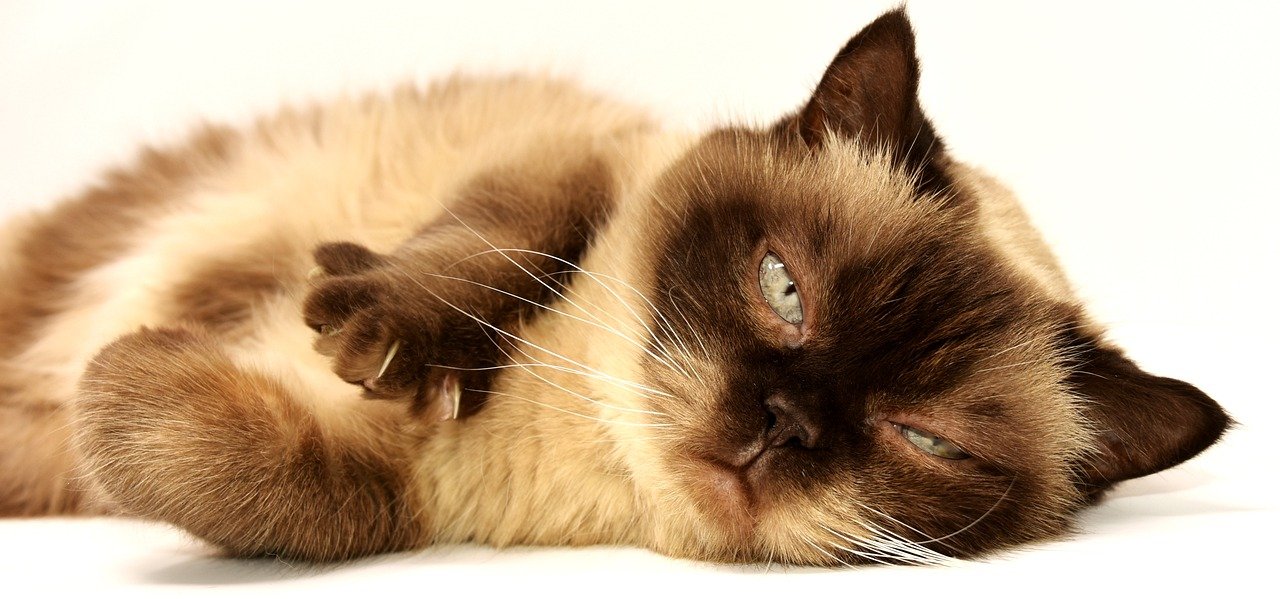Cats are fascinating creatures with unique ways of expressing themselves. While many people think of meowing as a cat’s primary form of communication, body language plays an equally significant role. Some breeds are particularly adept at using their bodies to convey messages. This article delves into the captivating world of feline body language, spotlighting the breeds that excel in this non-verbal form of communication.
Sphynx: The Expressive Communicator
The Sphynx cat, with its hairless appearance, may seem unusual, but it’s known for being exceptionally expressive. Without fur to conceal their movements, Sphynx cats use their entire bodies to express emotions. Their large, bat-like ears often twitch and pivot, signaling interest or alertness. These cats also have a knack for displaying affection through body contact, often rubbing against their human companions to show love. It’s not just their ears; their tails tell tales too, flicking with excitement or curling with curiosity. The Sphynx’s expressive face, with its large eyes and distinct whisker pads, makes their emotions easy to read, making them masters of non-verbal communication.
Scottish Fold: The Subtle Messenger
Scottish Folds are known for their unique folded ears, but don’t let that fool you into thinking they aren’t communicative. These cats are masters of subtlety, using their eyes and posture to convey a range of emotions. Their round, wide-eyed gaze can express curiosity, contentment, or even displeasure with a single glance. When they’re relaxed, their entire body seems to soften, often melting into a puddle of fur. Conversely, when alert, their posture becomes more upright, and their ears, though folded, will perk up slightly. Scottish Folds often use gentle head butts and soft paw touches to communicate affection, making them endearing companions.
Abyssinian: The Agile Articulator

Abyssinians are often described as the “Energizer bunnies” of the cat world, and their body language reflects this vivacious energy. These agile cats use their lithe bodies to express enthusiasm and curiosity. An Abyssinian’s tail is almost always in motion, twitching with excitement or flicking with interest. They have a habit of perching on high spots, surveying their surroundings, which indicates their alertness and intelligence. Their large, expressive eyes, combined with their active movements, make it easy to understand their mood. Abyssinians often communicate through playful gestures, inviting their owners to join in their antics with a flick of a paw or a playful leap.
Ragdoll: The Floppy Friend

Ragdolls are renowned for their relaxed and gentle nature, often going limp when picked up, hence their name. This breed communicates through a combination of relaxed body postures and gentle eye contact. Their large, soulful eyes can convey a sense of calm and trust, while their tendency to flop over when relaxed is a sign of complete contentment. When a Ragdoll is happy, they often follow their humans around, rubbing against legs or lying down nearby. Their soft purring and slow blinks are subtle signals of affection and trust. Ragdolls are the epitome of laid-back communication, making them perfect companions for those who appreciate a calm and loving presence.
Siamese: The Vocal Visualizer

While Siamese cats are famously vocal, their body language is equally expressive. These intelligent cats use a combination of vocalizations and physical gestures to communicate effectively. Their sleek bodies and long tails are often in motion, emphasizing their vocal cues. A Siamese cat might arch its back or puff up its fur to show excitement or agitation. Their large, almond-shaped eyes are highly expressive, often reflecting their mood or intentions. Siamese cats are known for their social nature and will often use head bumps and body rubs to show affection or seek attention. Their expressive nature makes them excellent communicators, both vocally and physically.
Bengal: The Wild Charmer
Bengal cats, with their striking coat patterns and wild appearance, are adept communicators through body language. These active and playful cats use their entire bodies to express their feelings. Their powerful, muscular build allows for a range of expressive movements, from high jumps to playful swats. Bengals often use their tails to communicate excitement or curiosity, with rapid flicks indicating heightened interest. Their eyes, wide and alert, are constantly taking in their surroundings, and they often use direct eye contact to communicate with their owners. Bengals also express affection through playful antics, inviting their humans to join in their energetic games.
Russian Blue: The Graceful Gazelle

Russian Blues are known for their elegant appearance and reserved nature, but their body language is quite telling. These graceful cats often use subtle movements to communicate, relying heavily on their expressive eyes and gentle gestures. A Russian Blue’s eyes are a window to their soul, capable of conveying a range of emotions from curiosity to contentment. Their sleek, silvery-blue bodies move with a fluid grace, often curling up in a cozy spot when relaxed. While they may not be as overtly expressive as some breeds, Russian Blues have a gentle way of communicating affection, often seeking out the company of their favorite humans for quiet companionship.
Oriental Shorthair: The Animated Artist

Oriental Shorthairs are known for their sleek and slender bodies, which they use to great effect in communication. These cats are highly social and expressive, often using their entire body to convey their emotions. Their long, whip-like tails are in constant motion, indicating excitement or curiosity. Oriental Shorthairs are also known for their large, expressive ears, which can pivot and twitch to reflect their mood. Their almond-shaped eyes are highly expressive, often conveying a sense of mischief or playfulness. These cats are known for their animated gestures, often inviting their humans to engage in playful interactions or cuddle sessions.
Turkish Angora: The Elegant Enchanter
Turkish Angoras are renowned for their elegant appearance and graceful movements, making them excellent communicators through body language. These cats have a natural poise and use their expressive eyes and flowing tails to convey their emotions. A Turkish Angora’s eyes can reflect a range of feelings, from curiosity to affection, often drawing their humans in with a single gaze. Their tails, long and feathery, are often held aloft, signaling confidence and curiosity. Turkish Angoras are also known for their playful nature, often using their paws to bat at toys or playfully interact with their humans. Their graceful movements and expressive gestures make them captivating companions.
Maine Coon: The Gentle Giant
Maine Coons are known as gentle giants, and their body language is a testament to their friendly and affectionate nature. These large cats use their size to their advantage, often leaning against their humans to show affection or seeking out close contact for comfort. Their expressive eyes are often filled with warmth and curiosity, making them easy to engage with. Maine Coons also use their bushy tails to communicate, with slow, deliberate movements indicating relaxation or happiness. Their gentle demeanor is reflected in their body language, often inviting their humans to join them in play or relaxation. Maine Coons are the epitome of friendly communication, using their size and presence to convey a sense of warmth and companionship.
Conclusion

Cats have a unique way of communicating, and understanding their body language can deepen the bond between humans and their feline companions. Each breed has its own distinct style of expression, from the expressive Sphynx to the gentle Maine Coon. By paying attention to these cues, cat owners can better understand their pets’ needs and emotions, fostering a harmonious and fulfilling relationship. Whether it’s through a flick of the tail, a gentle head bump, or a soulful gaze, these breeds demonstrate the art of communication without words.
Hi, I’m Bola, a passionate writer and creative strategist with a knack for crafting compelling content that educates, inspires, and connects. Over the years, I’ve honed my skills across various writing fields, including content creation, copywriting, online course development, and video scriptwriting.
When I’m not at my desk, you’ll find me exploring new ideas, reading books, or brainstorming creative ways to solve challenges. I believe that words have the power to transform, and I’m here to help you leverage that power for success.
Thanks for stopping by, Keep coming to this website to checkout new articles form me. You’d always love it!





